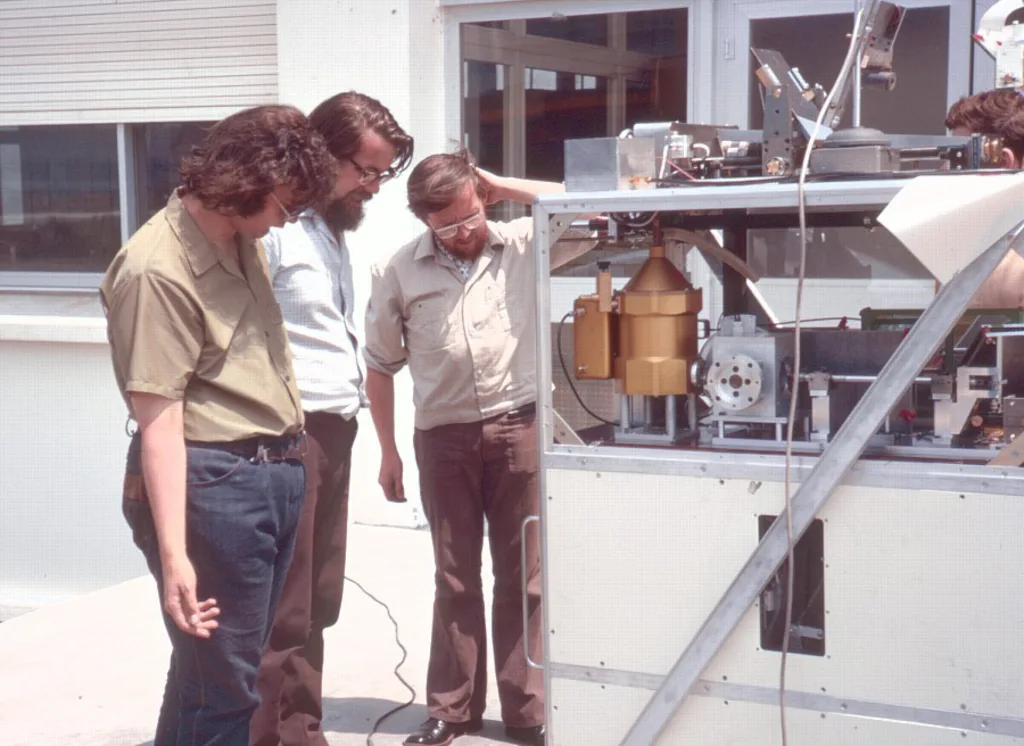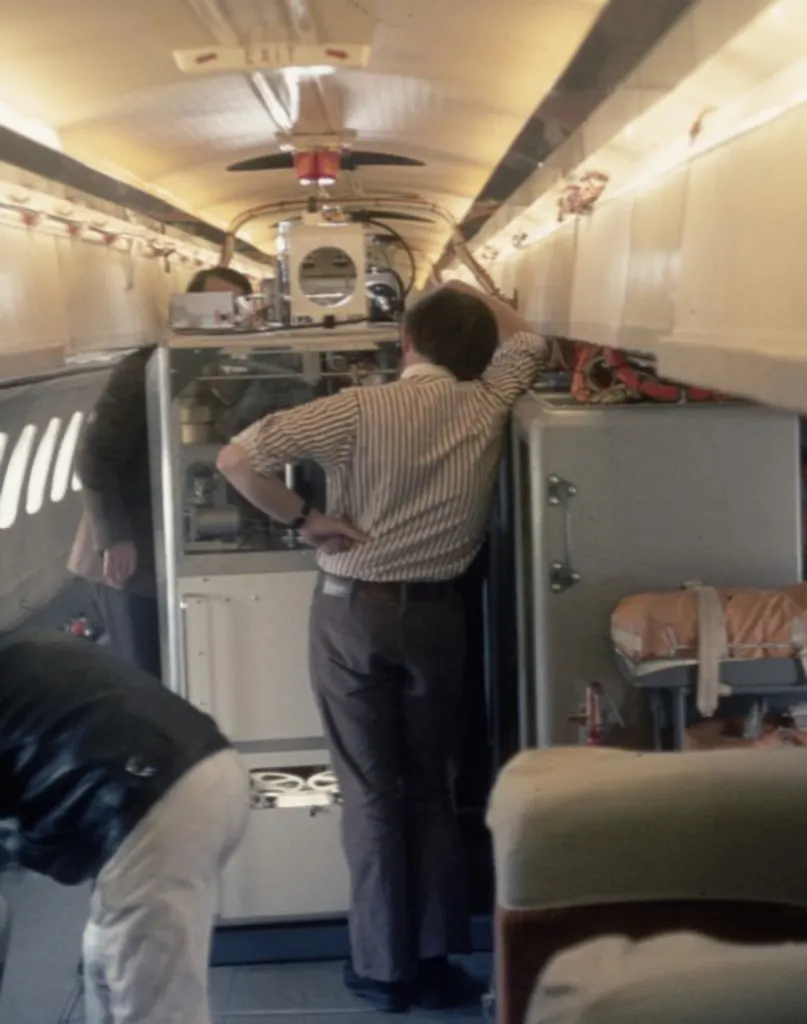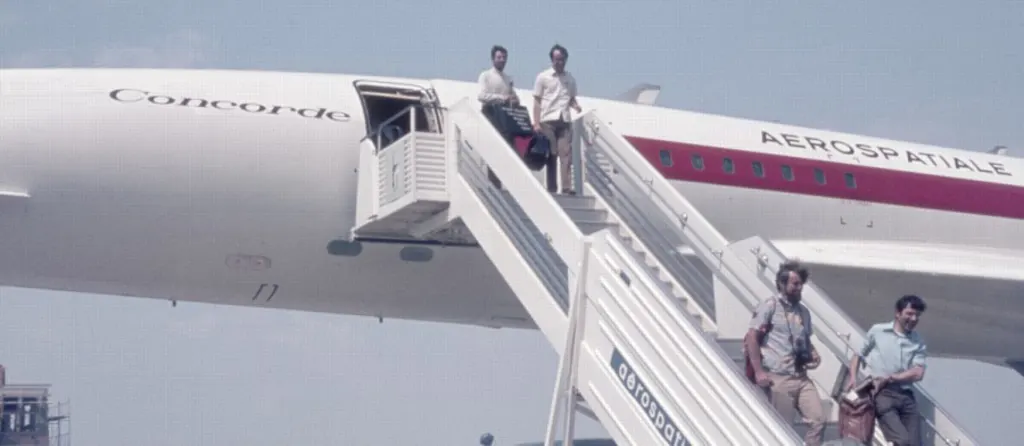Total solar eclipses are a mind-expanding demonstration of “the right place at the right time”—and for centuries, scientists and enthusiasts have voyaged to get there in the hopes that they might catch a glimpse of the sun’s corona, probe the solar wind, test theories like relativity, and simply experience the sublime wonder and dread that comes with being part of a rare cosmic alignment.
The most serious umbraphiles, or eclipse chasers, will seek out the longest possible totality, the uncanny period when the sun is gone and the temperature drops and the birds go quiet. When a total eclipse crosses North America on April 8, the maximum duration of totality along its path will be seen around the city of Torreón, Mexico, where people will be able to experience the eclipse for a luxurious 4 minutes and 28 seconds. Some chasers—flying in special scientific and tourism flights at sky-high prices—will be able to follow the moon’s shadow for twice as long.
But in 1973, the planets aligned in such a way that a group of daring and lucky astronomers managed to see the moon occluding the sun for more than an hour.
On June 30 that year, seven researchers packed into a prototype of the Concorde—still the only commercial aircraft capable of breaking the speed of sound—and took off from Las Palmas, Gran Canaria, in the Spanish Canary Islands, to intercept the path of the total eclipse passing over North Africa. Chasing the moon’s shadow at Mach 2, the aircraft provided the observers from France, Britain, and the United States with a record-breaking 74 minutes of totality.
For eclipse chasers of all kinds, the weird, unlikely mission remains the stuff of legend: the first and last trip of its kind. Supersonic eclipse chasing ended with the cancellation of the Concorde in 2003.
“I don’t know if this kind of adventure would be possible today,” Pierre Léna, an astronomer at the Paris Observatory who helped launch the mission, told Motherboard’s Chris Hatherill in 2016. NASA and a number of companies are readying new supersonic passenger jets, with the aim of flying by the end of the decade. Still, he said, “I think now all the structures are way more organized and hierarchical. I was lucky I got to do it, and of course I was young. In fact, I was very lucky people even took me seriously!”
The pitch
Chasing eclipses in planes has been a scientific pursuit since at least the 1920s, but the idea really took off during the atomic age. By the mid-’60s, scientists were using rockets and balloons to make eclipse measurements, but these flights only experienced totality for fleeting minutes. As the first nuclear test ban went into effect in 1965, the military began flights to simulate bombing runs and monitor the atmosphere for Russian tests, and a few scientists at Los Alamos spotted an opportunity.
At higher altitudes, instruments can capture details of the sun’s rim, called the corona, with little atmospheric interference. Understanding the corona can help explain how the sun’s heat and energy are transferred into the solar system in the steady stream of particles called the solar wind. Occasional blasts of those particles have the potential to damage spacecraft as well as electrical equipment on Earth.
The researchers at the nuclear lab petitioned their bosses at the Atomic Energy Commission with an extraordinary request: let them hitch rides with their equipment on the Air Force’s NC-135s in order to gather unprecedented data on cosmic rays, electrical and magnetic fields in the ionosphere, along with the frequent solar eclipses that, until then, were studied almost exclusively from the ground.
That early research at Los Alamos “continued, albeit catch-as-catch-can, until 1975,” according to a history of the missions, and would pave the way for high-altitude and space-based experiments that continue today. Still, the flights afforded observations of totality that were only double the duration that could be seen from the ground.
As the 1973 eclipse approached, two of Los Alamos’s high-flying astronomers, Art Cox and Donald Liebenberg, saw an incredible opportunity. The eclipse would last a maximum of 7 minutes and 4 seconds as the moon passed over the Sahara Desert, which is only 28 seconds short of the longest possible eclipse ever visible from Earth. There had only been one eclipse longer than this one in the preceding several hundred years, and there would not be a longer total eclipse for at least another century.
Meanwhile, supersonic aircraft were fast becoming a reality. Years earlier, Liebenberg organized a conference of astronomers to discuss the prospect of using the Air Force’s XB-70, a retiring testbed used to create the SR-71 Blackbird spy plane. It turned out that installing scientific instruments would have required too much retrofitting. But by 1972, a civilian jet that was nearing the end of its own test program—the Concorde SST—promised what he and the other astronomers had been hoping for.
Developed by the U.K. and France under the control and overall direction of French test pilot André Turcat, the French Concorde “001” prototype had set numerous speed and altitude records, promising a new era of supersonic passenger flight. Trans-Atlantic trips would now last a quick three and a half hours, less than half the time of a conventional airliner. That also meant, according to quick calculations, that it would be possible to nearly keep pace with the eclipse for more than 70 minutes, flying at only a few hundred miles-per-hour slower than the 1,500 mph (2,400 km/h) speed of the moon’s shadow as it crossed the sun.
Like Liebenberg, the Paris Observatory’s Léna had been working on his own Concorde proposal. A little more than a year before the celestial encounter, he managed to meet with Turcat. Over lunch at a restaurant inside Toulouse Airport, the pilot listened as Léna sketched out his vision on the paper tablecloth.
Turcat was impressed and pitched the idea to his bosses at Aérospatiale. Meanwhile, Liebenberg and Cox had reached out to the French Institut National Astronomic et Geophysique with a similar request. So too had John Beckmann, an astronomer at London’s Queen Mary College whose earlier request to use the British Concorde had been turned down. Aérospatiale agreed to green light the mission and to assume its costs: It would be one of the prototype airplane’s last missions before it was to be retired, before commercial service began.
The prep
As Turcat and chief navigation engineer Henri Perrier began preparing a flight plan, factoring in weather and ground temperatures at possible origins, which would affect the fuel load. Given the curved path of the eclipse, the pilots would need to forgo autopilot and rely on manual controls for much of the flight.
Precision would be key. Since the shadow would be traveling slightly faster than the Concorde, it would eventually outrun it. To pursue the eclipse for as long as possible, the team would have to meet the shadow at a precise point on its leading edge and pursue it at its maximum velocity of Mach 2—1,350 mph (2,200 km/h). Arriving more than 15 seconds late or a kilometer off would place them out of the shadow much earlier.
A global team of scientists was assembled—from the French Institute of Astrophysics, Kitt Peak National Observatory, Los Alamos National Laboratory, Queen Mary University of London, and the University of Aberdeen. They readied spectrometers and data recorders and other instruments, hacking them to adapt to the Concorde’s cramped cabin, with the aim of studying the corona, the chromosphere (a narrow region around the sun that’s usually washed out by the much brighter photosphere), and the intensity of the sun’s light from above much of the Earth’s atmosphere.
Holes were cut into the roof of the Concorde, and special windows were installed to give the infrared and optical cameras a clear view. All of the seats were removed from the cabin and the electrical supply was modified to provide power to the instruments.

At Queen Mary, a young PhD student named Jim Lesurf worked with other researchers in John Beckman’s lab to adapt their instrument—a Michelson interferometer with a helium-cooled detector—in order to automate tracking of the eclipse during the flight. But there wasn’t enough time. Instead, they devised a way to move the instrument manually, requiring Beckman to continuously turn a handle to keep the mirror aligned with one hand while tilting it down into the observing hole with the other.
On the 27th, the research teams boarded an old Caravelle airliner in Toulouse and followed the Concorde to the volcanic island of Gran Canaria. Upon landing, Lesurf recounted on his web page, his team quickly found a cool, safe place to store a dewer of liquid helium, which was needed to cool down their InSb Far-infrared detector: a shed near the runway with a jeep in it. As they began shoving the vehicle out, a group of military guards started running toward them, guns drawn. “Fortunately, after some discussions in a weird mix of English, French, and Spanish, we got permission to use the shed. This was helped along by us pointing out that if left in the sun, the dewer might explode.”

Flying into the shadow
On the morning of June 30, at precisely 10:08, Turcat and his copilot began takeoff from Gran Canaria—a few seconds early to correct for headwinds. The afterburner accelerated Concorde to 250 mph even before liftoff, pinning the researchers against their seats. As persistent winds pushed the flight behind schedule, Turcat briefly pushed the engines past their maximum operating speed of Mach 2.2 to meet the shadow, and arrived at the intercept point only a second late and a kilometer off course.
Above them, the stars were out and from the small side portholes from 58,000 feet, the passengers could see the curvature of the Earth. The image projected on a sheet of paper on the floor showed the ghostly ring of a total solar eclipse: a black sun. But the passengers had no time to take in the view.
“We were running through all the procedures in our minds,” Léna recalled, “and as soon as we got authorization from the cockpit to get out of our seats, we got up and got to work. We had to double-check the instruments, the pumps, the recorders . . . there was no room for emotion; that came later.”
As Concorde chased the lunar shadow across the Sahara in Mali, Nigeria, and Niger, Pierre and his team operated a telescope that could measure the infrared light coming from the corona. Léna focused on detecting dust particles left over from comets in the solar halo, attempting to determine if there was a ring of them around the sun. Paul Wraith from Scotland observed the effect produced by the sudden darkness on oxygen atoms in the Earth’s atmosphere. Jim Birch of the U.K. National Physical Laboratory wasn’t studying the eclipse at all: He was there to observe the upper atmosphere, out of growing concern that routine supersonic civil flights might harm the stratosphere.
Liebenberg got to work timing the cycles of solar intensity, or periodicity, which had been observed on the solar surface in the late 1960s but had never been recorded and confirmed over a long length of time. His and his team’s results would provide the first evidence of a five-minute periodicity.
Mechanical and operator error would muddy some of the other data—Beckman struggled with his contraption, for instance—even if later corrections and analysis would still produce some useful results. The research, published in a letter in Nature, included some of the first Far-infrared observations of the limbs of the sun and demonstrated a behavior called “limb brightening.”
In addition to the extended totality, the researchers experienced phenomena at the start and end of totality that appear only momentarily on the ground: a 7-minute “first contact” and a 12-minute “third contact,” which are the periods when viewers on the ground can briefly see Baily’s beads and the “diamond ring” effect.
When they landed in Chad, the “aircrew and the astronomers arrived to a surreal scene,” Hatherill wrote, “having descended from the stratosphere at supersonic speed in one of the world’s most advanced aircraft only to emerge under the strange half-light of the African sun, still partially eclipsed. An attempted coup d’etat (possibly timed to coincide with the eclipse) meant that armored vehicles mingled with people on the street who were using smoky glass to gaze up at the sun.”
Afterglow
The record-breaking flight made global headlines, and its data generated three articles in Nature. In 2013, the Concorde that flew the mission was enshrined at Le Bourget Air and Space Museum. Still, the researchers themselves have acknowledged that the flight had only a modest impact on solar science. The experimenters’ results went largely unused, including the measurement of the five-minute oscillations in coronal intensity.

While satellites that can watch the sun 24/7 and create artificial eclipses have revolutionized our understanding of the sun and now dominate solar observat
Login to add comment
Other posts in this group

The Fast Company Impact Council is a private membership community of influential leaders, experts, executives, and entrepreneurs who share their insights with our audience. Members pay annual

The Fast Company Impact Council is a private membership community of influential leaders, experts, executives, and entrepreneurs who share their insights with our audience. Members pay annual

What if the Playboy Mansion was filled with OnlyFans content creators? That’s the pitch for the Bop House, a TikTok page that has gained nearly three


Duo, the infamous Duolingo owl, is dead.
The language-learning app shared the news in a tongue-in-cheek post yesterday. The cause of death remains under investigation, but Duolingo


Japanese technology company SoftBank Group Corp. reported a 369.2 billion yen ($2.4 billion)
